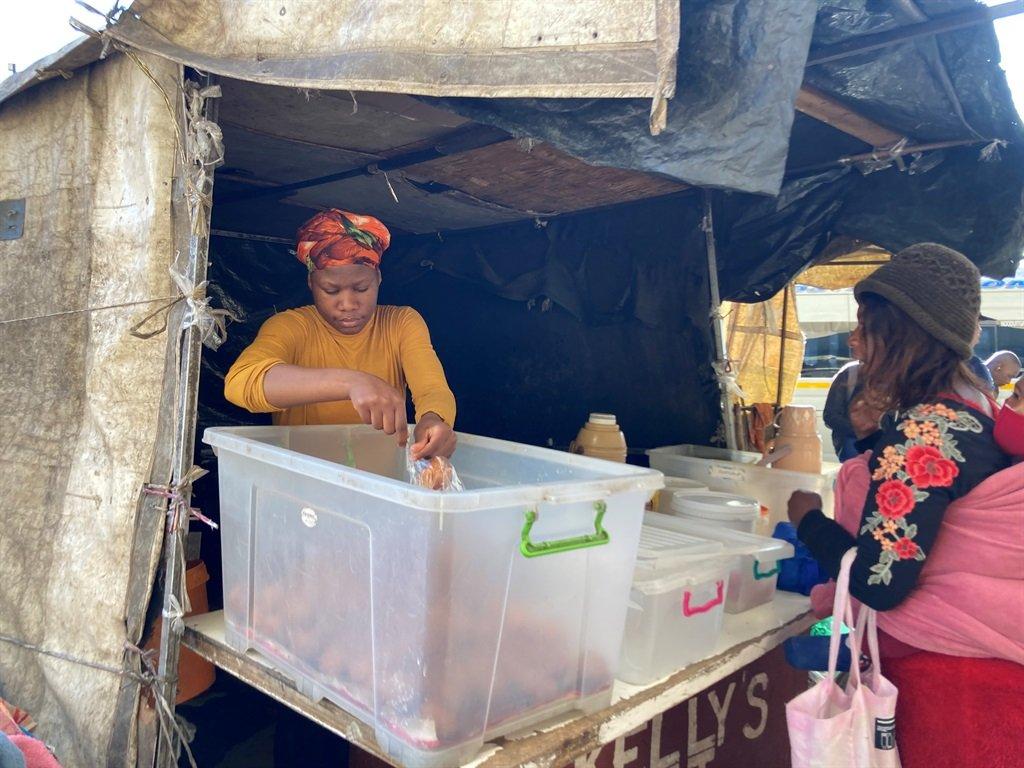Africa-Press – South-Africa. Amagwinya (vetkoek) is a much-loved, filling meal, but many commuters in the Johannesburg CBD say they have had to cut down as they are feeling the pinch of rising food prices.
The snack, which is dough deep-fried in cooking oil, has been a staple for Maxwell Gwamanga, a Johannesburg businessman.
Gwamanga told News24 he lined up at stalls every morning before his commute to work to buy amagwinya, which now sells for R1.50 to R2.50 each.
Inflation breaches upper limit of Reserve Bank target
He was seen queuing at Idah Langa’s stall on Rahima Moosa Street and spent R10 on four amagwinya for breakfast.
On some days, he buys more and saves some for lunch.
The Brixton resident, who pays R28 for a return trip to the city centre, said this had been part of his morning routine for years.
“My morning routine involves buying stock [for my business]. I grab some snacks on my way to work. I have to have my breakfast. Before, it was R1, then it increased to R2, and now it has risen to R2.50.
“I spend R10 for four because they cost R2.50 each. Before, I used to get six or five,” he said.
Gwamanga added the impact of Russia’s invasion of Ukraine is not only felt by retailers, but trickles down to consumers on the streets. The war has seen prices of essentials rise, including cooking oil.
He said inflation was not a foreign concept to him because of his experience in business, and added he had a fair understanding of the Russia-Ukraine war and its impact on the pricing of essential items:
Gwamanga said while it was unrealistic not to expect price hikes, he felt the pinch because he did not earn enough profit from his small business.
However, he added he was unlikely to stop buying street food because he also worried about the survival of small businesses.
“We have to earn a living because if I don’t support my sisters here, who will support them? We need to support each other in any way we can,” Gwamanga said.
Ali, who asked not to reveal his surname, said he was all too familiar with different street food flavours, including jollof rice.
He said amagwinya, although ever-increasing in price, remained the cheapest option on the street.
“[Food price increases] is something we people must understand. It’s the war; it’s all [around] the world… If the petrol is up, the food has to be up. In a week, I spend R50 to R80 [on amagwinya].”
Another commuter, Mabenga Garuba, told News24 his mornings started early.
He arrives at the city centre at 08:00. His first stop is at Langa’s stall, where he spends R20 on amagwinya and a cup of tea that sells for R6.
Garuba said preparing his breakfast and lunch at home might be cheaper, but ready-made street food was more convenient, although the rising costs have forced him to scale down.
He added:
Commuters said traders sold amagwinya within the fixed range of R1.50 and R2.50, depending on quantity and the ingredients they used.
Nolwandle Sithole (not her real name), who works in the city centre, said the adjusted prices made it difficult, and on some days impossible, to buy fillings, which were fast becoming a luxury for her.
“R5 only gets me two [amagwinya]. It’s one of those things I can’t do anything about because I have no choice but to buy, but they’re expensive, especially when you want fillings.”
Like her fellow commuters, she would prefer to prepare her own food, but she said street food was more convenient.
For More News And Analysis About South-Africa Follow Africa-Press






